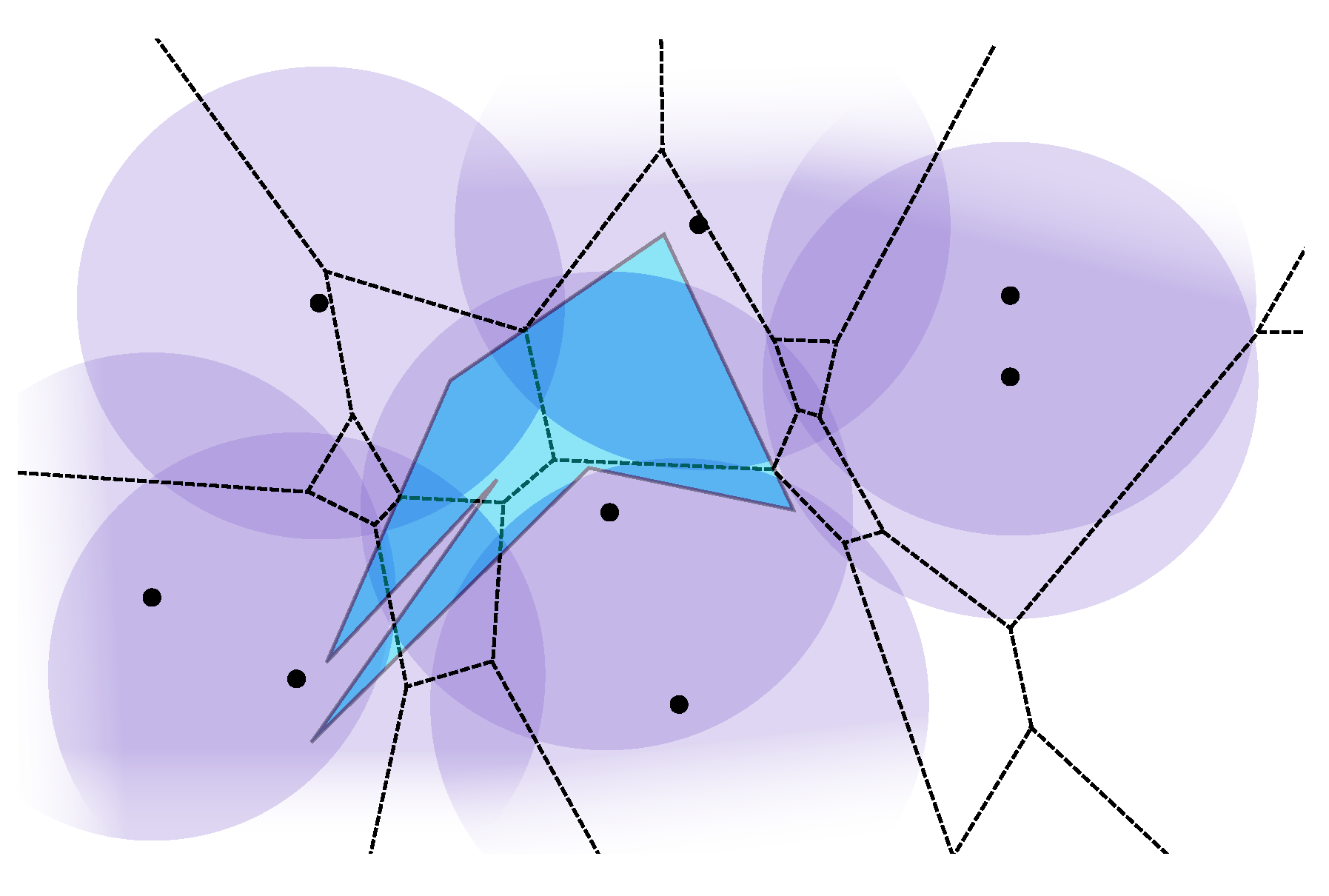计算几何 W39 Introduction to Computational Geometry
阅读材料
Classroom examples of robustness problems in geometric computations
by Lutz Kettner et al.
substituting floating point arithmetic for the assumed real arithmetic may cause implementation to fail.
focus on floating point - real numbers issue
IEEE 754
课堂笔记
Computational Geometry
algorithms that deal with geometric data
- points
- lines
- circles
- hyperplanes
applications
- graphic
- databases
- geographical information system
- robotics
one example:
a file contains n lines where the i-th line contains two numbers and , describing a point .
find all the points contained inside a rectangle
Overview
d dimensional point
d-dim line:
other useful representations:
- curve
- line: is a linear function of , i.e. .
- line segment or curve segment
- algebraic, semi-algebraic 代数,半代数
- sphere:
Geometric Predicates
Point P, Line l (above, below, on)
how to judge whether 3 points are in the same line?
check direction of vector and :
Line Segments
whether line and line segment have intersect.
if (q1 is on l1) or (q2 is on l1), then Tangent
else if ((q1 is below l1) and (q2 is below l1)) then below
else if((q1 is above l1) and (q2 is above l1)) then above
else intersecting
for 2 line segments s1 and s2:
if ((l1 intersects q) and (l2 intersects p)) then intersecting
else non intersecting
Reminder: Real RAM
real RAM
a RAM equipped with real registers
a real register can store any real number
basic arithmetic operations on real registers take O(1) time
i.e. we can compute sqrt of a number upto infinite precision in O(1) time
floating point issues in practice
- floating point operations are imprecise
- imprecision can create impossible scenarios, infinite loops etc.
- different operations can suffer differently from floating point issues
- smarter coding can help
- libraries available e.g. CGAL multi-precision floating point numbers
Convex Hull Algorithms
problem: compute the convex hull of a given set of n points in the plane.
a convex polygon, composed of vertices and edges
an upper hull + a lower full
Definition of convex hull
a shape without bumps
i.e. for any 2 points p, q in a convex hull, the line segment pq is inside the convex hull.
Graham’s Scan
compute the upper hull
- sort by x coordinate
- initialize UH to empty, UH.add(p1,p2); s=2
- for i = 3 to n do
- while s>=2 and UH(s-1), UH(s), pi make a left turn
- remove UH(s); s–;
- UH.add(pi); s++;
- while s>=2 and UH(s-1), UH(s), pi make a left turn
every point is removed at most once at step remove UH(s); s-- and add exactly once at UH.add(pi).
O(n) time for step 3.
Divide and Conquer
- find the median x coordinate and partition
- recurse on left & right
- merge
how to find the upper common tangent?
设凸多边形A和B的上外公切线为(Ai,Bj),切点分别为Ai和Bj,可知:A和B均在上外公切线(Ai,Bj)的右侧。进一步,“凸多边形A在(Ai,Bj)的右侧”等价于“Ai_next和Ai_pre均在(Ai,Bj)的右侧(或其中一个在右侧,另一个共线)”,简单起见,定义Ai_next为“Ai的next方向的顶点中第一个不与(Ai,Bj)共线的顶点”,同理Ai_pre,Bj_next,Bj_pre。“(Ai,Bj)是凸多边形A和B的上外公切线”这一命题等价于“Ai_next,Ai_pre,Bj_next,Bj_pre均在(Ai,Bj)的下方”。
add one by one, using graham’s scan
from a single point:
- time binary search.
from a chain:
- time binary search using previous
- time (more careful approach)
total time complexity:
Gift Wrapping (Jarvis March)
Initialize:
p = the left most point
r: an upward ray from p
CH.add(p)
Repeat:
Rotate r clockwise around p until
the first point q is hit
CH.add(q)
p=q
until p equals the left most point times
running time:



